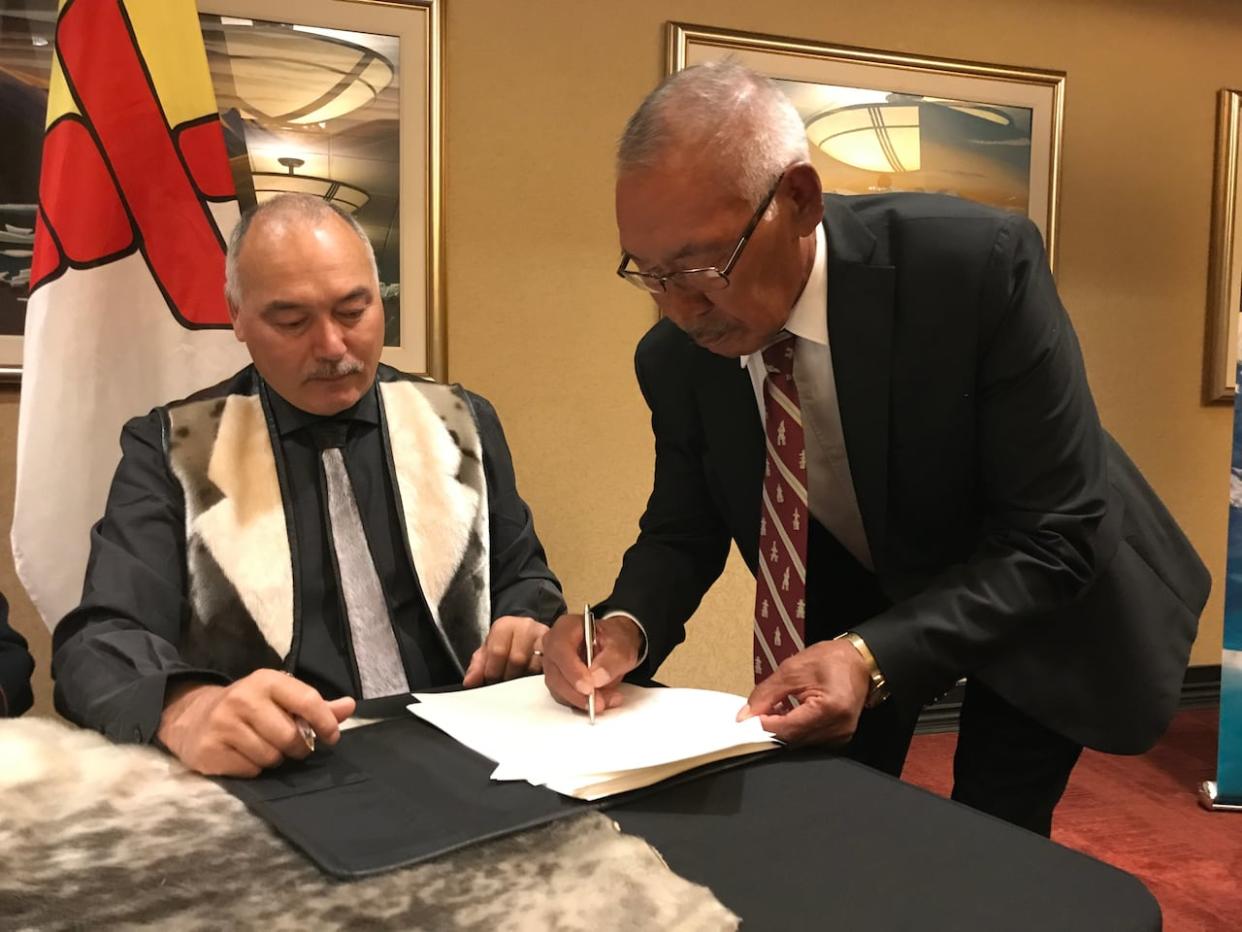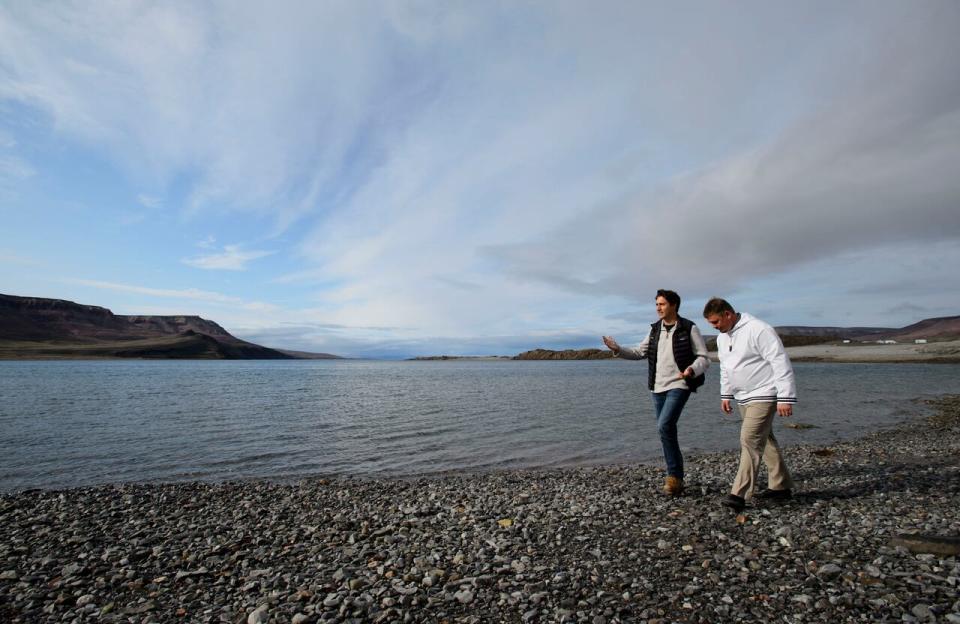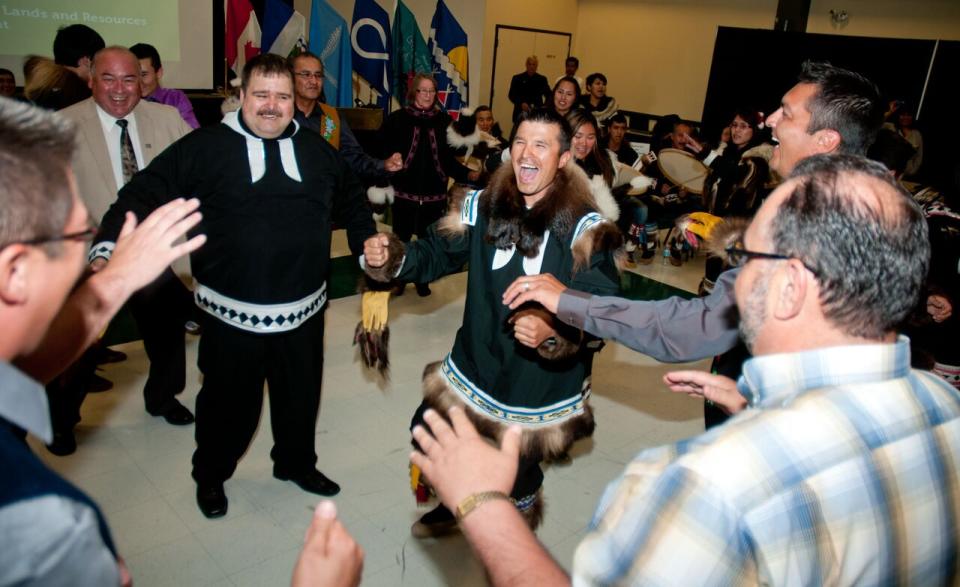Nunavut is about to sign a devolution deal. Here's how it worked in the Yukon and N.W.T.

A final devolution agreement, transferring responsibilities for Crown land and natural resources from the federal government to the Nunavut government, is being signed in Iqaluit Thursday afternoon.
The details of the milestone agreement aren't being made public until the document is signed by Prime Minister Justin Trudeau, Nunavut Premier P.J. Akeeagok and Nunavut Tunngavik Inc.
But there are some things we already know.
The federal government has gradually transferred responsibility for things like health, education, social services, housing and airports to the three territories since the 1960s. Devolving the responsibility for land and resources in Nunavut, currently held by the federal Department of Crown-Indigenous Relations and Northern Affairs Canada, is the next step.
It's a process that's already happened in the N.W.T. and Yukon.
Ken Coates, a professor of Indigenous Governance at Yukon University, said devolution is the "biggest single transition for an emerging government." Nunavut became its own territory in 1999.

Prime Minister Justin Trudeau and P.J. Akeeagok, now the premier of Nunavut, walk the shore of Pamiuja as they visit Arctic Bay, Nunavut, on Aug. 1, 2019. Both leaders are expected to sign a final devolution deal on Thursday. (Sean Kilpatrick/The Canadian Press)
"[The territory decides] what land is for development, for mining, for forestry. You make sure you allocate land for residential purposes, commercial purposes, allocation to municipalities and communities," Coates said. "You have to then also manage the natural resources, and that's everything — that's not just mining, that's not just oil and gas, that's actually looking after the wildlife."
A devolution negotiation protocol for Nunavut was signed back in 2008, and negotiations formally began in 2014. Canada, the Nunavut government and Nunavut Tunngavik Inc. reached an agreement-in-principal on devolution back in 2019. It wasn't legally binding, but it served as a stepping stone toward a final contract, signaling all major issues had been settled between the three parties.
Part of the process in Nunavut has involved developing a strategy to ensure the territory has the human resources to take over responsibilities related to land and resource management. Nunavut Tunngavik, one of the three parties to the agreement, has pushed to have a representative Inuit workforce post-devolution.
"That's one of the reasons why devolution [in Nunavut] has taken as long as it has," said Coates. He said devolution was an open-ended commitment from the federal government that territories could begin to negotiate when they were ready.
"Nunavut was very responsible, because they said, 'We're not going to go in and take all these duties until we know we have the administrative capacity, the physical capacity to sort of house these people, put them in office buildings.'"
When devolution takes effect, federal employees with Crown-Indigenous Relations and Northern Affairs Canada will have their jobs transferred to the territorial government. Back in 2019, Nunavut's chief devolution negotiator at the time told CBC News they'd be given the option to follow their job to the territory, or be transferred to another post within the federal government.
The devolution process is unique to each territory, and the nature of the agreement depends on the circumstances of the territory at the time. Here's a look at how devolution worked in the other territories.
Devolution like a 'graduate ceremony' in the Yukon
The Yukon was the first territory in Canada to take over land and resource management responsibilities from the federal government. Negotiations for the agreement began in 1998, and devolution took effect on April 1, 2003.
"Devolution felt, in many ways, like a graduate ceremony or the completion of an apprenticeship program," said Coates. "The territory was shedding the last major oversight mechanisms of the government of Canada, while retaining financial support, as provided to all other jurisdictions in Canada."
The process meant more than 240 federal employees became territorial employees.

Ken Coates, a professor of Indigenous Governance at Yukon University, said devolution is the 'biggest single transition for an emerging government.' (Jason Warick/CBC)
Coates said devolution in the Yukon went "extremely well."
"People went from one organization to the other, legislation was passed, new responsibilities and rules came into place, the administrative duties shifted and the North did not face all kinds of crises and confrontations," he said.
Devolution was preceded in the Yukon by the Umbrella Final Agreement a decade earlier, in 1993. Coates said that agreement, not devolution, is what laid a framework for sharing resource revenues.
When devolution took effect, residents in the territory considered it to be both a time of opportunity and risk. Some hoped it would spur mining activity, while others argued Ottawa needed to settle First Nations land and resource claims before handing control of those claims over to the Yukon government.
A change was later made to resource revenue sharing arrangements in 2012, which allowed a greater portion of those revenues to be used in the territory.
Devolution gives N.W.T. resource revenues
A final devolution deal was signed in the N.W.T. on June 25, 2013, and took effect on April 1, 2014.
The agreement was signed by the federal and territorial governments, as well as the Inuvialuit Regional Corporation, the Northwest Territory Métis Nation, the Sahtu Secretariat Incorporated, the Gwich'in Tribal Council and the Tłı̨chǫ Government. Other First Nations signed on later, but the Dehcho and Akaitcho First Nations have not.

Politicians and local drummers celebrate at the signing of the N.W.T. devolution agreement in Inuvik on June 25, 2013. (GNWT)
The agreement gave the territory 50 per cent of resource revenues being generated in the N.W.T. — up to an annual limit of $60 million at the time. There were three diamond mines operating in the territory back then.
The N.W.T. committed to sharing up to a quarter of that revenue with Indigenous governments that signed on to devolution. The rest was to be used for paying down the territory's debt and investing in infrastructure.
The parliamentary bill that put N.W.T. Devolution into Canadian law initially included changes to the Mackenzie Valley Resource Management Act that would turn four regional land and water boards merged into one controversial superboard. Those amendments were eventually repealed.
Devolution also meant the N.W.T. inherited about 175 federal employees working for the then-Aboriginal Affairs and Northern Development Department.
Once signed, Nunavut's devolution agreement will need approval in the House of Commons and the Senate.


